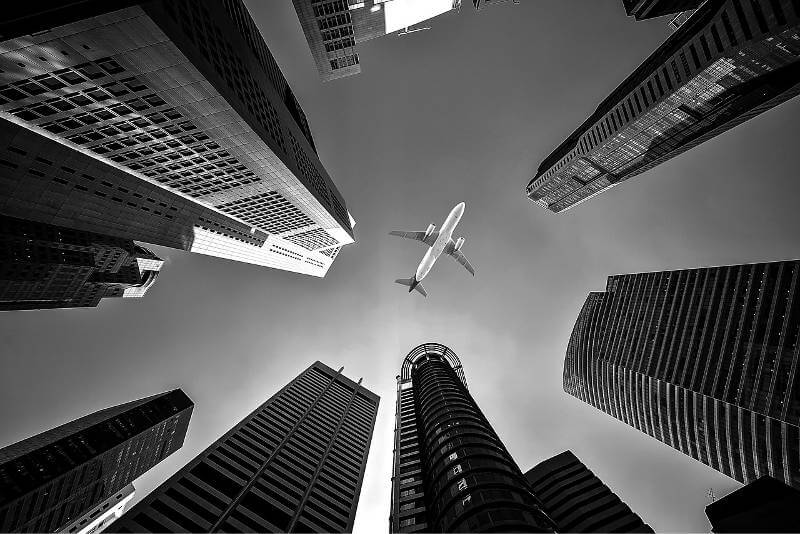Researchers from the Paul Scherrer Institute PSI and ETH Zurich have conducted calculations to determine how air traffic can achieve climate neutrality by 2050. Their findings indicate that simply replacing fossil aviation fuel with sustainable synthetic fuels will not be sufficient; air traffic must also be reduced. The study, published in the journal Nature Communications, emphasizes the need for comprehensive measures to address the environmental impact of the aviation sector.
The European Union, along with Switzerland, aims to achieve climate neutrality by 2050. As the aviation sector accounts for 3.5 percent of global warming, it is expected to make a significant contribution towards this goal. Airplane emissions per passenger or freight kilometer are two to three times higher than those of other transport sectors. In response, the International Civil Aviation Organisation (ICAO) and many airlines have committed to reducing CO2 emissions to zero or achieving climate neutrality by 2050.
The study conducted by researchers at PSI and ETH Zurich examines whether this ambitious target is attainable and explores potential approaches. Romain Sacchi, one of the study’s lead authors from PSI’s Laboratory for Energy Systems Analysis, emphasizes the need to define what is meant by “zero carbon” or climate neutrality. If only CO2 emissions from aircraft in the air are considered, it falls short of addressing the entire climate impact. The calculations indicate that by 2050, CO2 emissions from aircraft would account for only about 20 percent of their total climate impact if air traffic continues to grow at current rates. To achieve climate neutrality, it is crucial to address not only flying emissions but also the production of fuel and the overall aviation infrastructure.
However, the study concludes that the measures currently implemented in flight operations are insufficient to achieve climate neutrality by 2050. “New engines, climate-friendly fuels, and carbon capture and storage alone will not be enough,” says Marco Mazzotti, Professor of Process Engineering at ETH Zurich. “We also need to reduce air traffic.”
The study highlights the significant role played by non-CO2 effects, which occur alongside CO2 emissions and have a considerable impact on the environment. While the carbon emissions resulting from burning aviation fuel contribute to the greenhouse effect, soot and nitrogen oxides released during flights react in the air, forming methane, ozone, water vapor, and condensation trails. These factors have often been overlooked or miscalculated in previous analyses and “net zero” commitments.
The researchers employed precise methods that consider the short-lived nature of non-CO2 effects compared to CO2. While CO2 remains in the atmosphere for thousands of years, non-CO2 effects dissipate within shorter timeframes. The study emphasizes the need to address the increasing accumulation of short-lived climate forcers (SLCFs) resulting from growing air traffic. Romain Sacchi likens it to a bathtub with both the tap and drain open: as long as the influx of SLCFs surpasses their dissipation, their greenhouse impact persists.
Reducing air traffic is identified as a crucial lever to achieve climate neutrality. The study’s calculations indicate that, in conjunction with underground carbon dioxide storage, a reduction rate of 0.8 percent per year is required if fossil fuels continue to be used. This would result in an 80 percent reduction in air traffic volume by 2050 compared to current levels. If more climate-friendly fuels based on renewable electricity are adopted, a reduction rate of 0.4 percent per year would be sufficient.
The study also examines the potential of sustainable aviation fuel (SAF) as an alternative to conventional petroleum-based fuels. SAF, produced from CO2 extracted from the air and hydrogen obtained through electrolysis of water, has the advantage of being virtually climate-neutral when generated using renewable energy. However, SAF production requires significant amounts of energy and is currently four to seven times more expensive than conventional fuel. The widespread use of SAF would necessitate increased investment in carbon capture and electrolysis plants.
The higher cost of SAF would lead to a necessary increase in airfare prices to achieve climate targets. While this might discourage demand for flights, the study acknowledges that SAF production is expected to become more cost-efficient over time, positively impacting its carbon footprint.
Romain Sacchi and Viola Becattini, both authors of the study, stress that there is no single solution for achieving climate neutrality in aviation by 2050. A comprehensive approach is needed, combining infrastructure development for CO2 storage, efficient SAF production, and a reduction in air travel demand. By embracing these measures, the aviation industry has a chance to make significant progress in combating climate change.


